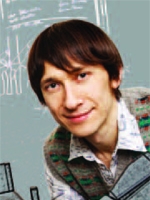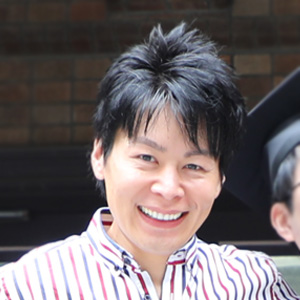Universal Principles in Cellular, Developmental and Evolutionary Processes
A growing amount of biological data combined with current advances in the modeling of complex systems provide unprecedented opportunities to understand universal features of biological systems and their evolutionary dynamics. This issue accompanies several challenges and raises several questions. What are the universal properties in the information processing of biological systems? How can we extract a small number of macroscopic variables describing adaptation and evolution? How can we predict the outcome of biological adaptation and evolution? In this workshop, we address these problems with the outstanding young researchers in this field. By showing recent experimental and theoretical advancements on how to quantitatively measure and consistently characterize biological systems, we try to draw a prospective picture for universal principles in biological systems. We aim to create a dialog between researchers of different fields and to inspire future collaborations.

Basic information
This workshop has been canceled !!!
- Date & Time: 14th/March/2020 09:00--20:30
- Location: Room 285, Faculty of Science Bldg.1, Hongo Campus, Univ. Tokyo.
- Organizers: Chikara Furusawa, Tetsuya J. Kobayashi, Naoki Irie, and Yuichi Wakamoto
- Support: Grant-in-Aid for Scientific Research on Innovative Areas
- Constrained and Directional Evolution(進化制約方向性)
- Information Physics of Living Matters(生命の情報物理学)
Programme
- 09:15-09:20: Opening Remark
- Session1: TBA
- 09:20-09:50: Chikara Furusawa (UTokyo, Japan)
- Toward prediction and control of microbial evolution: Analysis of phenotypic constraints in laboratory evolution
- 09:50-10:30: Mikhail Tikhonov (Washington Univ., USA)
- Toy models for evolution in many environments and high dimensions
Short break
- Session2: TBA
- 10:50-11:20: Naoki Irie (UTokyo, Japan)
- Complex organisms become less evolvable?
- 11:20-12:00: Nobuhito Tokuriki (UBC, Canada)
- Long-term experimental evolution of antibiotic resistance enzyme
- 12:00-12:30: Yuichi Wakamoto (UTokyo, Japan)
- Maintenance and restoration of drug resistant phenotypes against resistance gene deletion
Lunch
- Session3: TBA
- 13:40-14:20: Tom Shimizu (AMOLF, Netherlands)
- Motility as a driver for coexistence in bacterial spatial competition
- 14:20-14:50: Satoshi Sawai (UTokyo, Japan)
- Collective migration in the parallel world
Short break
- Session4: TBA
- 15:10-15:50: Lingchong You (Duke Univ., USA)
- Dynamics of horizontal gene transfer in microbial communities
- 15:50-16:30: Namiko Mitarai (Niels Bohr, Denmark)
- Competition and persistent coexistence of bacteria and phage
Short break
- Session5: TBA
- 16:50-17:30: Arvind Murugan (UChicago, USA)
- Physical Constraints on Epistasis
- 17:30-18:00: Tetsya J. Kobayashi (UTokyo, Japan)
- Understanding biological sensing and its optimality
- 18:30-20:30: Poster Session/ Banquet (at Sanjo Kaikan)
Speakers' information & abstract
Mikhail Tikhonov
- Assistant professor, Tikhonov group
- Physics Department, Washington University, USA

The study of high-diversity ecology and evolution confers a whole new life to the classic question of statistical physics – what is different when some parameter is large? Most of our intuition about evolution and ecology comes from analysis of low-dimensional models, with few environments or few factors determining fitness. In the opposite, realistic regime of many environments and high-dimensional phenotypes, even the simplest toy models can surprise us.
I will describe one minimally structured toy model for these intriguing general questions, and will discuss a few avenues we are investigating in my group. In particular, I will argue that, generically, in high dimensions one no longer expects a direct exposure to some environment to be the most effective way of achieving highest fitness in it
Lingchong You
- Professor, Laboratory of Biological Networks
- Biomedical Engineering, Duke University, USA

Mobile genetic elements (MGEs) are genetic materials with the ability to move within a genome or between species, a phenomenon known as horizontal gene transfer (HGT). HGT has been speculated to play a critical role in introducing and maintaining functional traits in microbial communities. Due to the lack of modeling and experimental tools, however, predicting, measuring, and controlling HGT dynamics in microbial communities remains a fundamental challenge. Overcoming this limitation requires both the development of new modeling framework and quantification of essential variables for each community, including relative abundances and growth rates of constituent populations, as well as the fate of MGEs being transferred. These variables are critical to determining how community composition and the physiology of constituent populations affect HGT and vice versa.
In this talk, I will discuss our progress in modeling and measuring HGT dynamics in microbial communities, with implications for controlling the spread of antibiotic resistance and for precision microbiome engineering.
Nobuhiko Tokuriki
- Associate Professor, Michael Smith Laboratories
- Michael Smith Laboratories, the University of British Columbia, Canada

Evolution generates genetic diversity with the same protein function via genetic drift. However, such genetic variation among orthologous proteins can cause phenotypic diversity of proteins, e.g., the level of physiological function(s), protein expression and stability, the type and degree of secondary promiscuous functions, as well as their evolvability toward new functions. Our knowledge of the processes and mechanisms underlying generation of phenotypic diversity is highly limited.
I present our long-term experimental evolution of an antibiotic resistance enzyme, VIM-2 metallo-β-lactamase, to study the mechanisms of generate and maintain genotypic and phenotypic diversities. First, we evolved the wild-type VIM2 to confer higher ampicillin resistance to the host bacteria E. coli via 18 rounds of directed evolution, which resulted in >100-fold increase in antibiotic resistance. Subsequently, we performed 100 rounds of "neutral" genetic drift with two, high and low, purifying selection pressures (1000 and 10 µg/mL ampicillin). The extensive genetic drift has generated a molecular fossil record of protein variants which exhibit up to 30% amino acid difference (100 a.a. mutations) compared to the wild-type enzyme.
I present several intriguing findings about the evolutionary dynamics and mechanisms from the long-term experimental evolution of the enzyme: i) How a constant purifying selection pressure can generate phenotypic diversity in selected and unselected enzymatic activities. ii) How some mutations can be fixated under the neutral genetic drift. iii) How mutations epistasis is prevalent during the evolution and impair our ability to predict accumulation of mutations during genetic drift. At last, I discuss a critical role of genetic drift and epistasis for evolution of proteins, in particular, for evolvability toward new protein functions.
Namiko Mitarai
- Associate Professor, Mitarai Laboratory
- Niels Bohr Institute, Denmark
A virulent phage infection to a host bacterial cell results in lysis of the cell, where possibly hundreds of phage particles are released after a latency time. The phage pressure is believed to be an important factor to shape microbial community and a driving force of their evolution, and yet we are far from having a full picture of their warfare. We discuss various facets of phage-bacteria art of war, such as (i) mutually supported diversity through assembly of community by invasion and extinction process and (ii) persistent coexistence in spatially structured environments.
Tom Shimizu
- Group leader, Systems Biology group
- AMOLF, Netherlands

Elucidating elementary mechanisms that underlie bacterial diversity is central to ecology and microbiome research. Bacteria are known to coexist by metabolic specialization, cooperation, and cyclic warfare. Many are also motile, which has been studied in terms of mechanism, benefit, strategy, evolution, and ecology. Indeed, bacteria often compete for nutrient patches that become available periodically or by random disturbances. Yet, the role of bacterial motility in coexistence remains unexplored experimentally.
Here we found that for mixed bacterial populations that colonize nutrient patches, either population outcompeted the other when low in relative abundance. This inversion ofcompetitive hierarchy is caused by active segregation and spatial exclusion within the patch: a small fast-moving population can outcompete a large fast-growing population by impeding its migration into the patch, while a small fast-growing population can outcompete a large fast-moving population by expelling it from the initial contact area. The findings show that motility differences and their trade-offs with growth are sufficient to promote diversity, and suggest new roles for motility in niche-formation and collective expulsion-containment strategies beyond individual search and survival.
Arvind Murugan
- Assistant Professor, Murugan Laboratory
- Department of Physics, the University of Chicago, USA

Living systems evolve one mutation at a time, but a single mutation can alter the effect of subsequent mutations. The underlying mechanistic determinants of such epistasis are unclear. We argue that the physical dynamics of a biological system can generically constrain epistasis. Using models and experimental data on proteins and regulatory networks, we argue that if the long-time physical dynamics is dominated by a slow, collective mode, then the dimensionality of mutational effects is reduced. Consequently, epistatic coefficients for different combinations of mutations are no longer independent, even if individually strong. This constraint reduces the ruggedness of the sequence-to-function map. Our work suggests that slow collective physical modes can make biological systems more evolvable.
Chikara Furusawa
- Professor, Furusawa Laboratory
- Universal Biology institute, Graduate School of Science, the University of Tokyo, Japan

Biological systems change their state to evolve and adapt to changes in environmental conditions. Despite the recognized importance of characterizing the biological capacity to adapt and evolve, studies on biological evolvability and plasticity have remained at a qualitative level.
To unveil how the course of evolution is constrained in high-dimensional phenotype and genotype spaces, we performed laboratory evolution under various (more than 100) stress environments using an automated culture system we developed. Then, we quantified the changes in gene expression profile, resistance profile to various stresses, and genomic sequence. The results of these comprehensive analyses demonstrated that the phenotypic and genotypic changes were constrained on a relatively small number of possible patterns even under diverse selection pressures. Based on these results, we will discuss the nature of phenotypic plasticity and constraint in bacterial evolution, and strategies to predict and control the evolutionary dynamics.
Tetsuya J. Kobayashi
- Associate Professor, Laboratory for Quantitative Biology
- Institute of Industrial Science, the University of Tokyo, Japan

Almost all biological organisms are equipped with sensory systems with which they obtain the information about the environment. The performance of such a sensory system is crucial for the survival of organisms in the face of dynamic and unpredictable changes in the environment. Bacterial chemotaxis and its associated sensory machinery have been the simplest model system. Each bacterium senses the external chemical gradient by actively moving in the gradient with stochastic activations of its sensory receptors for swimming either towards sources of attractants or away from those of repellants. To obtain the information about the direction of the gradient, cells have to process the dynamic change in the receptor activities out of the stochastic and noisy background activities. Even though biochemical models of bacterial chemotaxis have been proposed, the question of how the bacterial sensory system can extract information from noise remains elusive.
In this work, we address this problem using the theory of optimal filtering. By physically modelling the way how a bacterium is exposed to the gradient, we derive optimal sensing dynamics as the optimal filtering equation. By comparing the derived equation with a biochemical model of the bacterial chemotaxis, we suggest that such optimal sensing is structurally implemented in the bacterial sensory system. In addition, we show that our model based on optimal filtering can reproduce an experimentally observed relation in the system. We will also discuss potential applications of our approaches based on optimal filtering theory.
References
- T. J. Kobayashi, Phys. Rev. Lett. 104, 228104 (2010).
- T. J. Kobayashi, Phys. Rev. Lett. 106, 228101 (2011).
Naoki Irie
- Associate Professor, Irie Laboratory
- Department of Biological Sciences, School of Science, the University of Tokyo, Japan

Phenotypic evolution of animals are not completely free to all the possible directions, and often show limited diversity. A set of basic anatomical features, or body plan for example, is strictly conserved throughout the evolution within each animal phylum. The phenomenon is sometimes called as “phylogenetic inertia”, however, the evolutionary mechanism behind this conservative feature of body plan is not clear. One attractive explanation for the body plan conservation is to attribute this to the conserved mid-embryonic phase, when body plan develops, however, this again raises question why mid-embryonic phase is so conservative.
Based on our recent study, we found possible contribution of pleiotropic constraints at regulatory level behind this conservativeness of animal evolution. Specifically, we found that genes utilized in vertebrates’ conserved mid-embryonic phase are intensively recruited to other developmental processes, and the degree of the recruitment not only correlated with essentiality for normal development, it also showed positive correlation with their evolutionary conservation. Re-utilization of existing genes has long been known to facilitate evolutionary diversification (e.g., creating novel traits etc.), however, our findings imply that gene re-utilization has a double-edged sword effect toward evolution, limiting effect on the diversification. These results imply that the more complex regulatory system organisms have, the more constrained (or less evolvable) they become. We will also talk about our recent, unpublished findings over the potential relationship between fluctuation of developmental system and evolvability.
Yuichi Wakamoto
- Associate Professor, Wakamoto Laboratory
- Department of Basic Science, Graduate School of Arts and Sciences, The University of Tokyo, Japan

Understanding how tightly genotypes constrain phenotypes of an organism in a given environment is a fundamental problem in genetics. Genotype-phenotype correspondence is usually studied by comparing the terminal and stable phenotypes between the cells with a reference genotype and those with some genetic changes such as mutations. However, it remains elusive how rapidly and uniformly cells transit to a new terminal phenotype after the introduction of genetic changes, especially at the single-cell level.
Here, we introduce an experimental approach that combines a microfluidic single-cell tracking and optogenetic gene recombination system, showing that 40% of Escherichia coli cells that lost chloramphenicol (Cp) resistant gene in a Cp-exposed environment nevertheless continued stable growth and division over 30 generations. The maintenance of resistance phenotype did not occur when the resistance gene was deleted more than 10-hour before the Cp-exposure. The restoration of growth in the presence of Cp was accompanied by regaining the ribosome component balance. These results indicate that the propagation of the effects of genetic changes to phenotypes depends on the intracellular and extracellular conditions at the timing of the mutation and suggest the history-dependence and redundancy of genotype-phenotype correspondence.
Satoshi Sawai
- Professor, Sawai Laboratory
- Department of Basic Science, Graduate School of Arts and Sciences, The University of Tokyo, Japan

The social amoeba Dictyostelium discoideum differentiate into either prespore or prestalk cells that initially appear at random position then segregate to form a distinct prestalk tip region that sits on top of a prespore cell mass. Despite the system being the classic and well-studied, the exact navigational rules that guide the cells in his process remains elusive. Here by using microfluidics gradient chambers and microspheres coated with contact signals, we show that, formation of the ‘tip’ in Dictyostelium is driven by contact-mediated collective cell migration in combination with chemotaxis. Surprisingly, the mechanism is an inversion of the so-called contact inhibition of locomotion – a canonical scheme of collective cell migration in metazoans. Furthermore, we demonstrate that both prestalk and prespore cells can protrude towards the contact signal as well as to chemotax towards cAMP, however when given both signals, prestalk cells orient towards the chemoattractant whereas prespore cells choose the contact signal. These data suggest a new model of cell sorting by two competing cues and modes of collective cell migration. The present findings cast light on the remarkable parallels in collective cell migration that evolved independently in metazoa and amoebozoa.